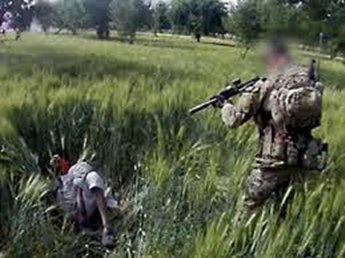Rotten Apples, Command Responsibility and Culture
Last month we spoke about individualism versus collectivism, and holding the line as leaders when it is imperative we do so for the greater good. More than anything this relates to culture - creating, maintaining, and, when required, enforcing a positive culture where clarity around values, standards, and discipline are essential.
A strong example of the importance of a healthy culture can be found in institutions like the military.
When a leader or commander sets the right tone in his or her unit; leads in alignment with strong, clear values; is vigilant about setting and demanding high standards of those around him/her; and has the courage and character to adhere to those standards and values themselves (as well as hold others to account when they stray from those values), a result is a unit where the culture is one of excellence and high performance. This culture is essential for the roles and responsibilities asked of military personnel, often in high pressure and volatile environments.
Conversely, where the command or leadership takes their eye off the ball, sets the wrong tone themselves, or simply fails to exercise vigilance in maintaining a positive culture and holding those around them to account when they fail to meet the standards required of them, the result can prove to have dire consequences.
The most recent and extreme example of what can happen when leaders fail to create and maintain a positive culture has been the topic of discussion around Australia and the world in the last few days.
Last week saw the publishing of the Brereton Afghan Report. The Report was the culmination of a 4-year independent investigation into the Australian Special Air Service Regiment’s (SAS) operations in Afghanistan.
In summary: the report blamed the murders of innocent Afghani prisoners, farmers or civilians in 2009 - 2013 on an unchecked "warrior culture" among some soldiers.
It said 25 special forces soldiers had taken part in unlawful killings directly or as "accessories" across 23 separate incidents. It recommended that 36 incidents in total be investigated by federal police.
Australian Defence Force chief General Angus Campbell said none of the incidents could be "described as being in the heat of battle".
It also found evidence that:
junior soldiers were told to get their first kill by shooting prisoners, in a practice known as “blooding";
weapons and other items were planted near Afghan bodies to cover up crimes; and
an additional two incidents could constitute a war crime of "cruel treatment”.
So what happens next?
Prime Minister Scott Morrison has said a special investigator would be appointed to consider prosecutions from information contained in the report.
But police investigations could take years, even before possible criminal trials.
The government said it would also establish an independent oversight panel to provide "accountability and transparency that sits outside of the ADF chain of command".
Ultimately soldiers will be dismissed from the Armed Forces, criminal prosecutions may or may not follow, the families of the innocent deceased may receive compensation payments, but what impact will this have and what lessons will this yield on the cultural change desperately needed within the SAS and wider Army? Will the leaders and commanders whose job it was to set and maintain positive culture and high standards also be held to account? Or will the response from the military and Government simply focus on the few rotten apples, rather than the root cause of the problem?


